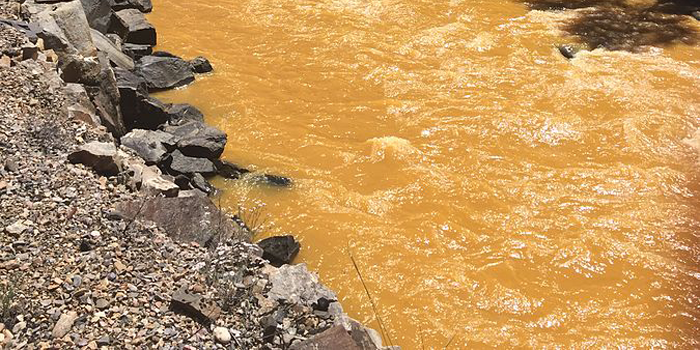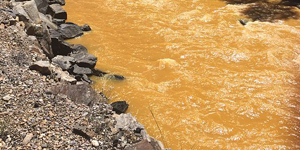Heavy Metals Turn Waterways Orange
Efforts to clean up an abandoned mine turned into an environmental disaster when polluted water accidentally spilled into a local waterway. With Science Buddies Project Ideas, students can safely make real-world connections to how heavy metals and other pollutants affect aquatic life.

On August 5, 2015, Colorado's Animas River turned orange. The water flowed past towns and agricultural land, travelling more than 100 miles to Farmington, New Mexico, where it poured into the San Juan River. The color change was caused by the accidental release of 3 million gallons of polluted water from an abandoned gold mine near Silverton, Colorado.
Authorities immediately warned people to stay out of the water and to stop using it to irrigate farmland. Meanwhile, scientists rushed to discover exactly what was in the water, so they would know how dangerous it was to people and animals.
Analysis confirmed that the polluted water contained high levels of heavy metals, such as copper, iron, and zinc. Heavy metals are naturally occurring elements, many of which humans need in small quantities in their diets to be healthy. However, higher concentrations of heavy metals may be poisonous to us, as well as to plants and other animals.
Many Paths to Water Pollution
The Animas River flowing orange was the result of an extreme problem. Unfortunately, waterways can become polluted even without a major wastewater spill. For example, runoff of chemicals from city streets and cultivated fields can negatively affect the quality of rivers, streams, lakes, and ponds. What happens to aquatic plants and animals when their water is contaminated with chemicals? This is a question you can explore in the Heavy Metals and Aquatic Environments project.
Acid rain is another cause of water pollution. Water droplets in clouds can absorb pollution in the atmosphere, and then when the droplets fall as rain or snow, they deposit the pollution on land and in waterways. To discover how increased acidity affects aquatic plants and animals, try the Acid Rain and Aquatic Life project.
Making Connections
For other STEM projects for students interested in learning about water pollution, see these Science Buddies project ideas:
- Something's Fishy About That Fertilizer
- Froggy Forecasting: How Frog Health Predicts Pond Health
- How Does Soil Affect the pH of Water?
- It's Raining, It's Pouring: Chemical Analysis of Rainwater
- Too Much of a Good Thing? Study the Effect of Fertilizers on Algal Growth
- Using Daphnia to Monitor Water Toxicity
The Animas River is no longer flowing orange, and it was re-opened for recreational use. But what will the long-term effects of the spill be? Sounds like a question to be answered with science!
Categories:
You Might Also Enjoy These Related Posts:
- Plastics and Earth Day - Science Projects
- Arduino Science Projects and Physical Computing
- 10+ Robotics Projects with the BlueBot Kit
- 5 STEM Activities with Marshmallow Peeps
- March Madness Basketball Science Projects: Sports Science Experiments
- Women in STEM! More than 60 Scientists and Engineers for Women's History Month
- Explore Artificial Intelligence and Machine Learning with Student AI Projects
- 10 Reasons to Do the Rubber Band Car Engineering Challenge










